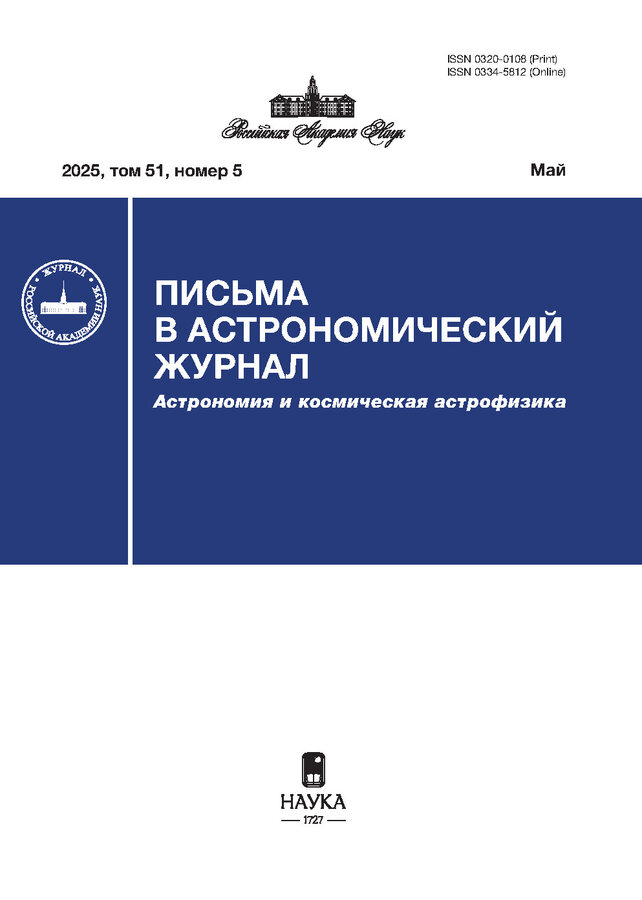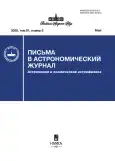Astronomy Letters
ISSN (print): 0320-0108
Media registration certificate: No. 0110224 dated 02/09/1993
Founder: Institute of Space Research RAS, Russian Academy of Sciences
Editor-in-Chief Sunyaev Rashid Alievich
Number of issues per year: 12
Indexation: RISC, list of Higher Attestation Commissions, CrossRef, White List (level 2)
The journal publishes articles and urgent communications with the results of original research in all areas of modern astronomy and astrophysics, including high-energy astrophysics, theoretical and relativistic astrophysics, cosmology and extragalactic astronomy, ground-based and space-based optical, submillimeter and radio astronomy, physics of the Sun, planets and comets. Research related to rapidly developing new areas of astronomy and space astrophysics are considered a priority.
The journal is indexed in ADS, Web of Science, Scopus, RSCI.
The journal was founded in 1975.
Current Issue
Vol 51, No 5 (2025)
Articles
SVERKhNOVAYa Ia-CSM SN 2020aeuh: SLIYaNIE MASSIVNYKh S/O BELYKh KARLIKOV?
Abstract
 235-239
235-239


MODELIROVANIE REGISTRATsII YaRChAYShEGO GAMMA-VSPLESKA GRB 221009A SEGMENTIROVANNYM STsINTILLYaTsIONNYM DETEKTOROM
Abstract
 240-254
240-254


SKOROST' VRAShchENIYa SPIRAL'NOGO UZORA V GALAKTIKE MLEChNYY PUT'
Abstract
 255-263
255-263


KOSMIChESKIY EKSPERIMENT MVN. PERVYE REZUL'TATY RABOTY NA ORBITE
Abstract
 264-286
264-286


MODELIROVANIE AKKRETsIONNOY AKTIVNOSTI PROTOPLANETNOGO DISKA VSLEDSTVIE STOLKNOVENIYa SO STRUEY GAZA
Abstract
 287-297
287-297


TsIKLIChESKIE IZMENENIYa SREDNIKh VREMEN REKURRENTNOSTI SOLNEChNYKh VSPYShEK V AKTIVNYKh OBLASTYaKh
Abstract
 298-302
298-302












